Photos: Prehistoric Rock Art Hints at Elite Class on Kisar
On Kisar
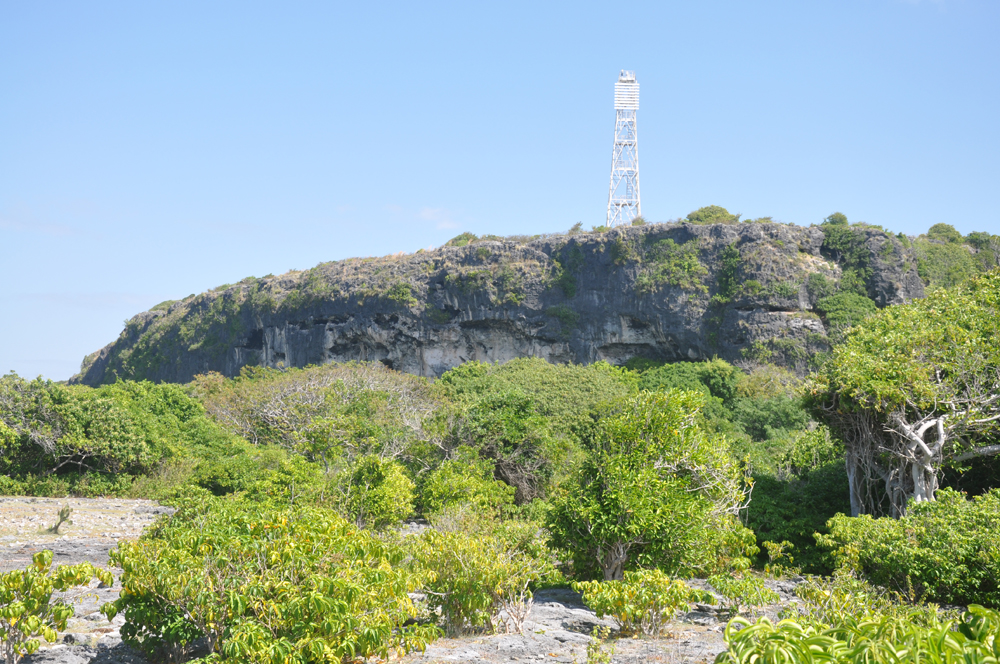
Hundreds of prehistoric rock paintings have been found on the tiny Indonesian island of Kisar, in the Maluku Islands group, north of the large island of Timor, by archaeologists from the Australian National University in Canberra, Australia, and the University of Gadjah Mada at Yogyakarta in Indonesia.
Kisar covers an area of only about 80 square kilometers (30 square miles) but the researchers found more than 30 rock art sites and hundreds of individual rock paintings in limestone terraces on the island.
Near Timor

Kisar lies about 20 miles north of Timor-Leste, an independent nation on the island of Timor.
The researchers made two expeditions to Kisar in 2014 and 2015, originally to look for signs of early human occupation.
The islands have been inhabited for thousands of years, but a wave of new settlers about 3500 years ago brought agriculture to the region.
Rich history
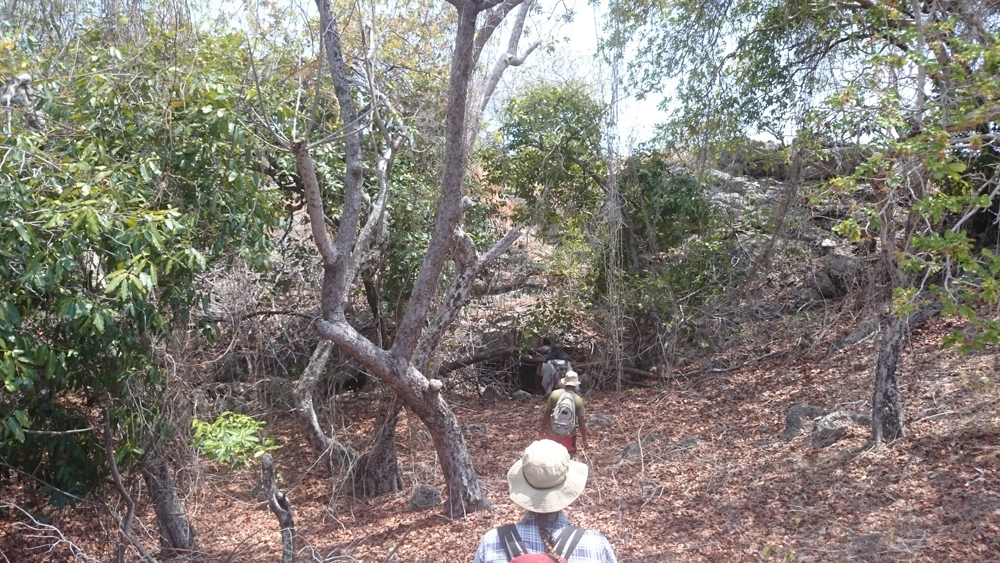
In 2015 archaeologists from ANU and Gadjah Mada University surveyed the island.
They were astonished at the richness of the prehistoric rock art that they found – at least 30 rock art sites have been discovered on Kisar so far.
An ocean view
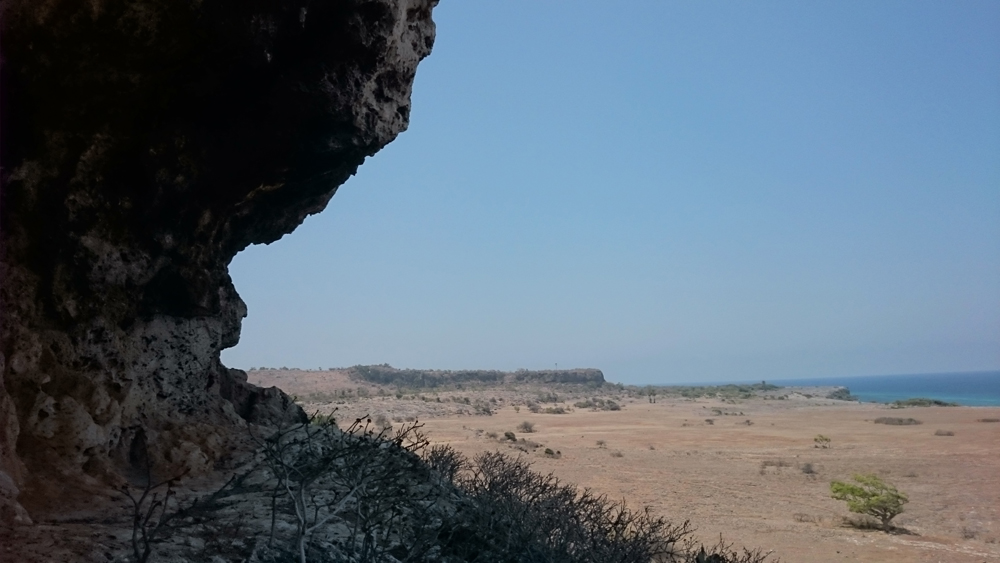
The rock paintings are found on the walls and ceilings of eroded overhangs in the many uplifted limestone terraces on the island.
The rock art sites often look out over the coastline, a few hundred meters (yards) away.
Evidence of humanity
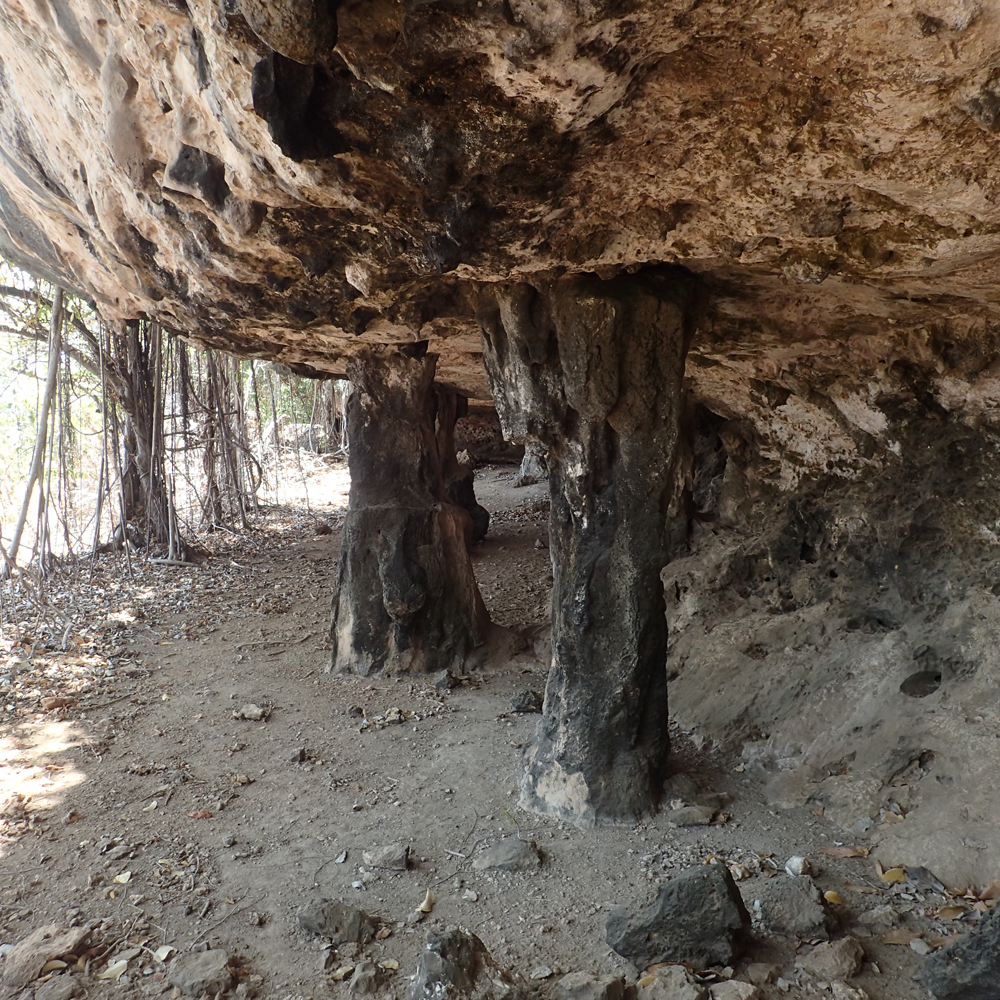
The archaeologists also excavated some of the sites and found signs of human habitation beneath some of the overhangs, indicating that they were used as shelters in prehistoric times.
Doodles
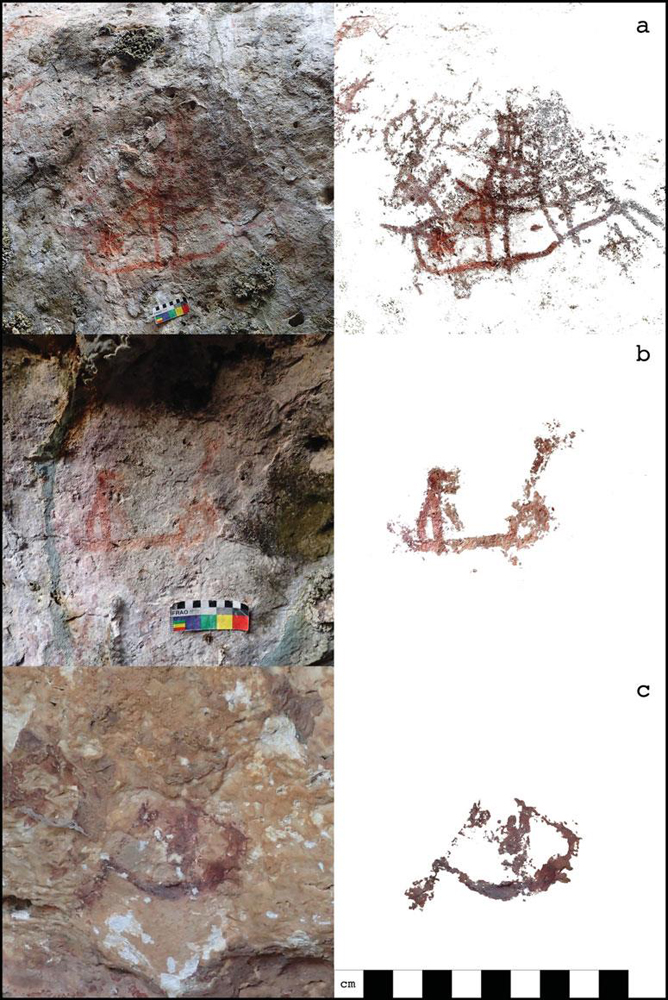
Each of the rock art sites on Kisar is daubed with dozens of individual rock paintings, each usually only a few centimetres (inches) across.
These rock paintings from the Here Sorot Entapa site (top, a & b) and from the Jawalang 6 site (bottom, c) show human figures in boats.
Pet art
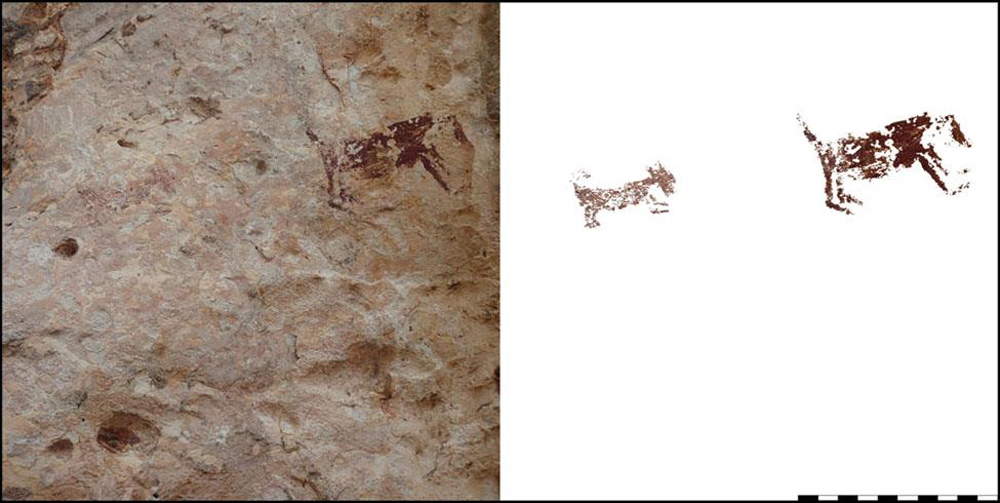
The rock paintings were made using a red pigment on the white limestone of the walls and ceilings of the overhangs.
Dogs appear in some of the rock paintings, which means they were painted some time after dogs were introduced to the region about 3500 years ago.
Get the world’s most fascinating discoveries delivered straight to your inbox.
Rock art

Some of the rock art sites on Kisar also feature the shapes of human hands outlined with red pigment.
The researchers think these hand stencils may be much older than the figurative paintings.
Cultural changes
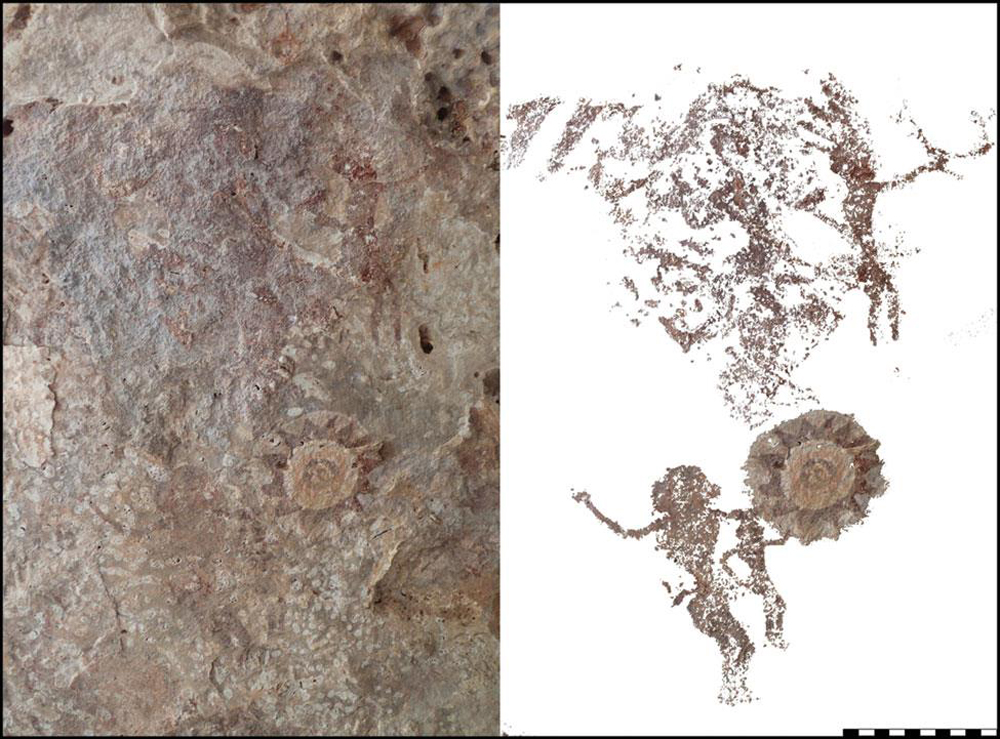
Some of the rock art from Kisar appears to show human figures gesturing to the sun, or perhaps beating a bronze drum decorated with a picture of the sun.
Others rock painting appear to show human figures in procession, carrying axes and shields.
Lead archaeologist Sue O’Connor thinks the figurative rock paintings on Kisar were made about 2500 years ago, when a new style of rock art began to be made at many islands in the region, including nearby Timor.
Trade influence

O’Connor believes the new art style may indicate the emergence of social elites who derived their wealth from trade in prestige items, such the ancient bronze drums that are still treasured as heirlooms by people in the region.
The drums – known as Dong Son drums after the site of their first discovery in Vietnam – were traded throughout Southeast Asia during the Bronze Age.
Important images
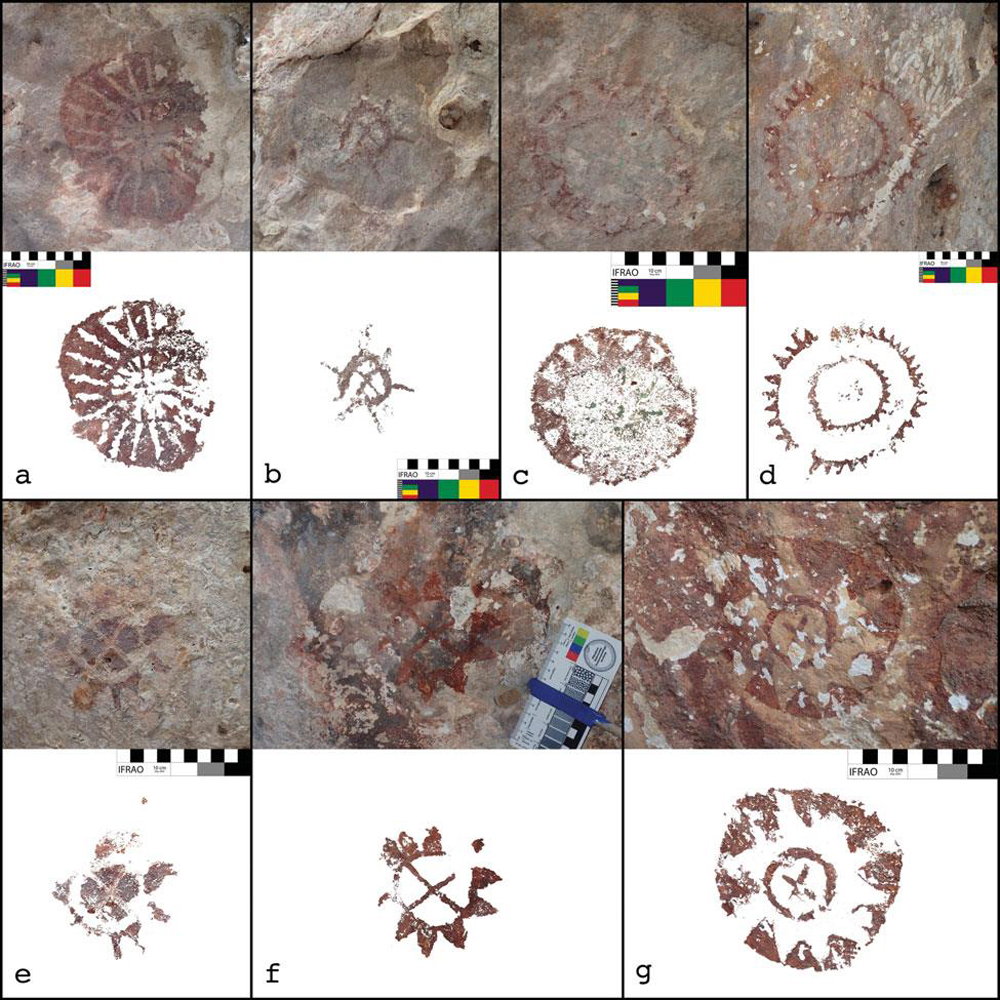
The striking surface of Dong Son drums are often decorated with sunburst patterns.
Similar patterns are a common feature of the rock art on Kisar and Timor.
They may indicate the sun itself, or perhaps the patterns on particular drums that signified different tribal groups.
Tom Metcalfe is a freelance journalist and regular Live Science contributor who is based in London in the United Kingdom. Tom writes mainly about science, space, archaeology, the Earth and the oceans. He has also written for the BBC, NBC News, National Geographic, Scientific American, Air & Space, and many others.


